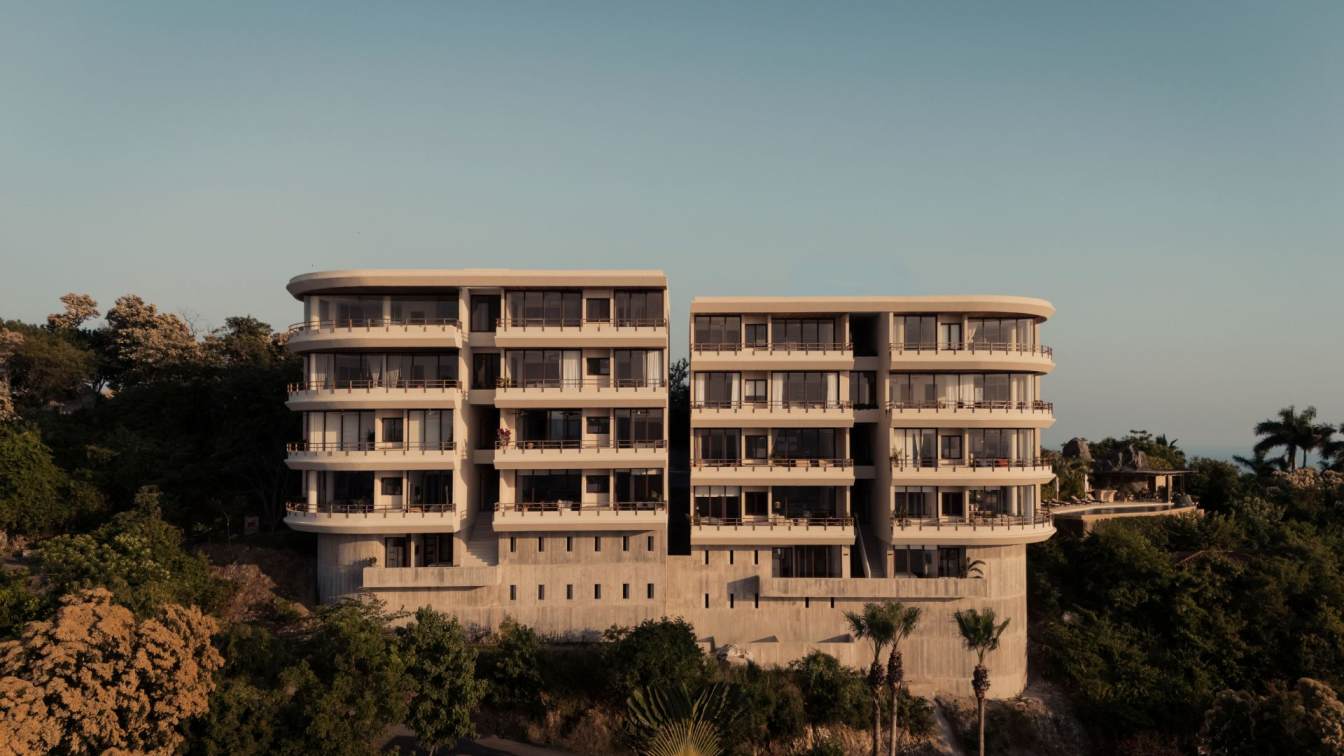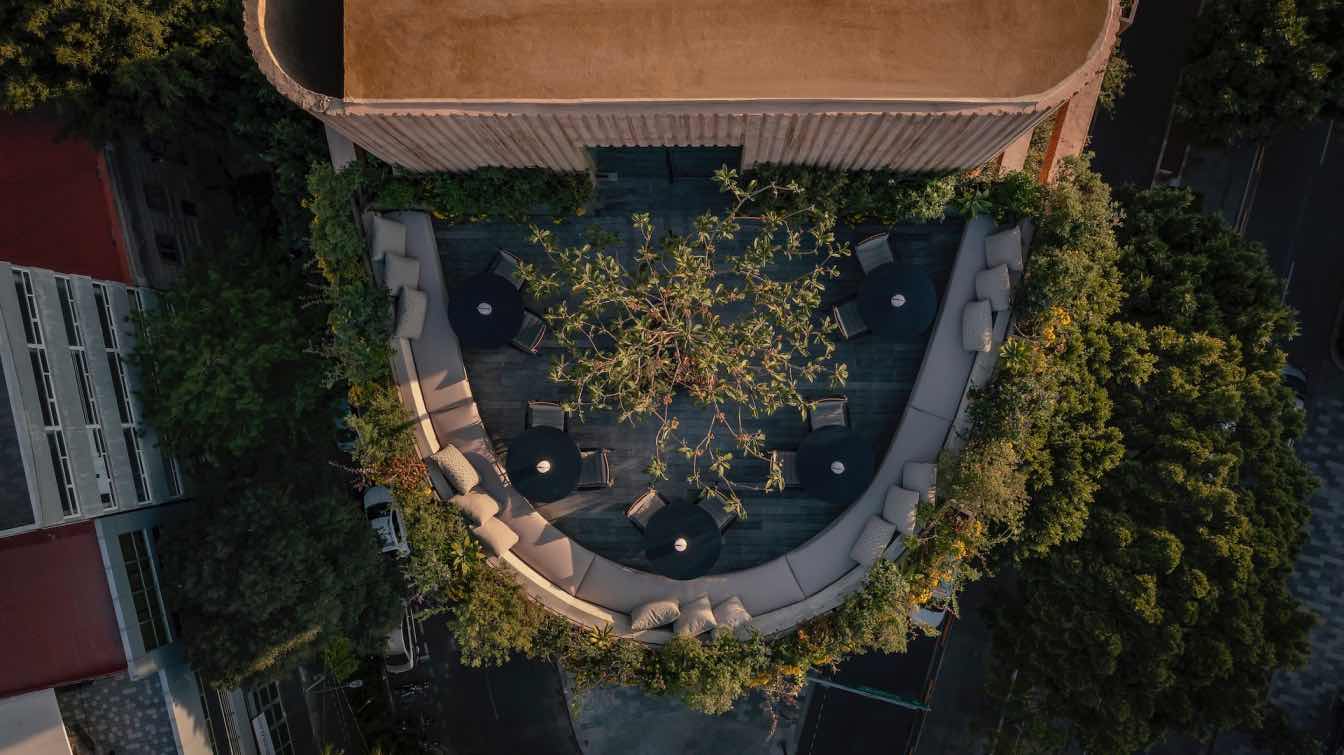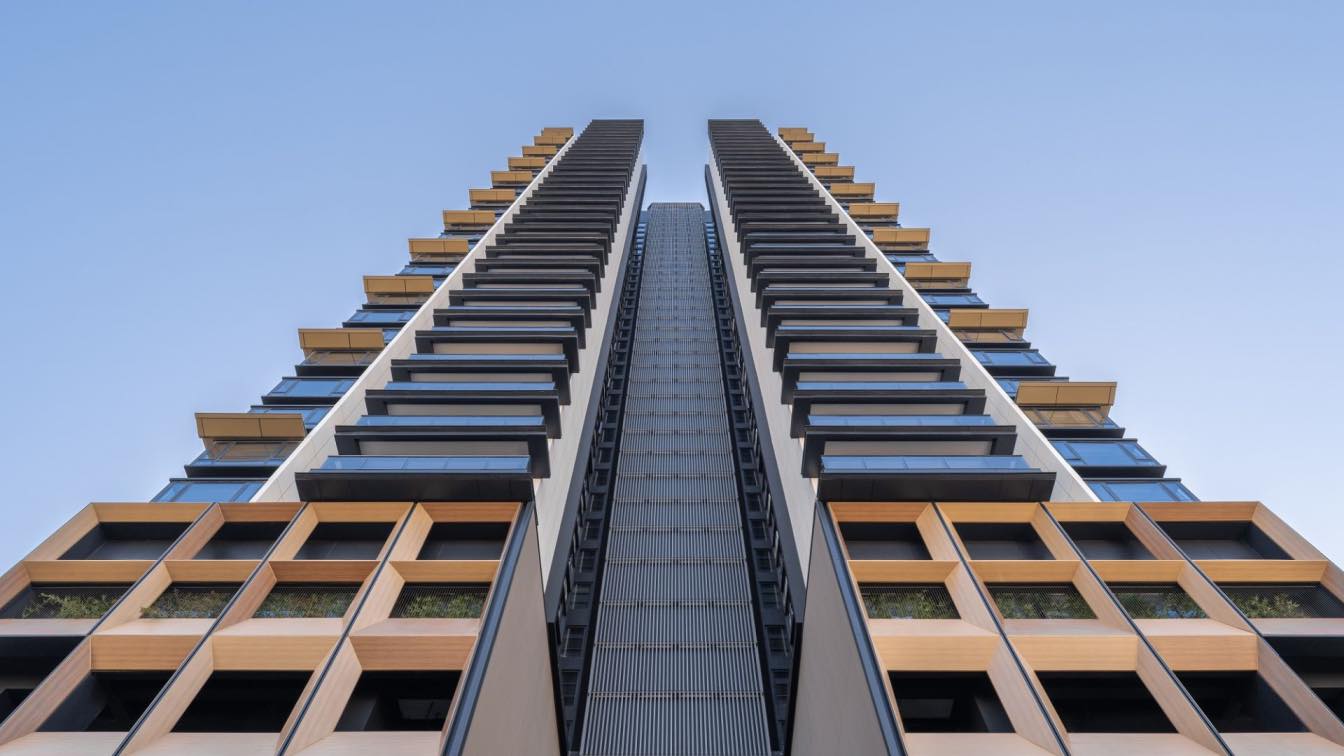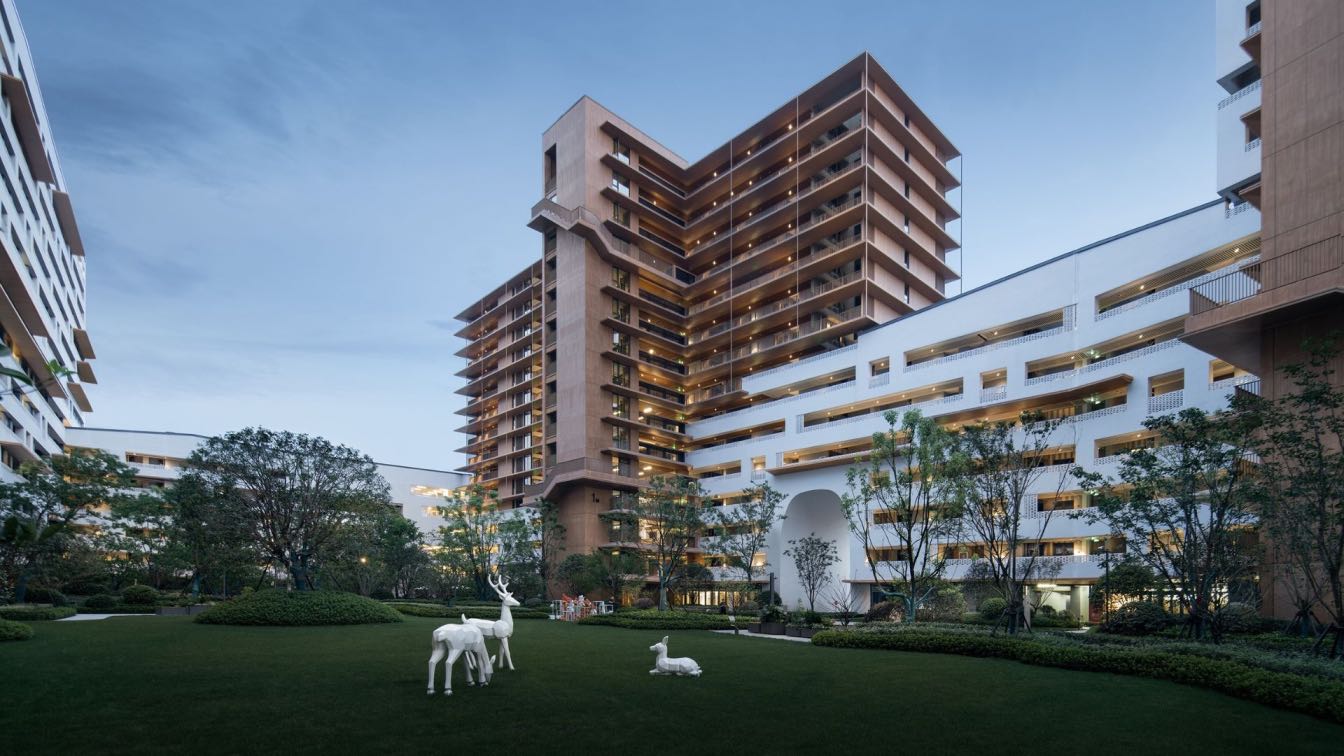CAAM: The development site frames Cerro del Vigía, a spectacular property with a southwest-facing view of Zihuatanejo Bay. Towers A and B of the complex each consist of seven villas, along with a base structure that compensates for the site’s uneven terrain. The villas, ranging in size from 140 m² to 260 m², are arranged to maximize views and integrate seamlessly with the landscape.
The most interesting aspect of the project was how, starting from two initial rectangles, the volumetry was shaped through strategic sections and breaks, aiming for spatial fluidity and lightness that responded both to functionality and the relationship with the surroundings. These interventions allowed the spaces to open up and transform, creating an organic circulation that fluidly connects different areas.
Breaking up these volumes not only improved circulation but also helped frame the landscape, offering panoramic views at every moment and from every corner, maximizing the visual connection with the sea one of the project’s main design goals. The relationship with the landscape is crucial in this project, with the ocean view being an essential visual focal point. To achieve a more seamless integration with the natural surroundings, a curve was introduced on both floors of each tower an approach that not only lightens the buildings’ volumetry but also prevents them from appearing intrusive within the landscape. This curvature, in addition to adding dynamism and softness to the facade, enhances the sense of lightness and continuity with the surroundings, allowing the towers to visually merge with the horizon.


























